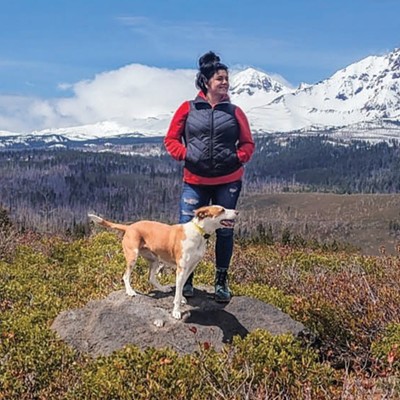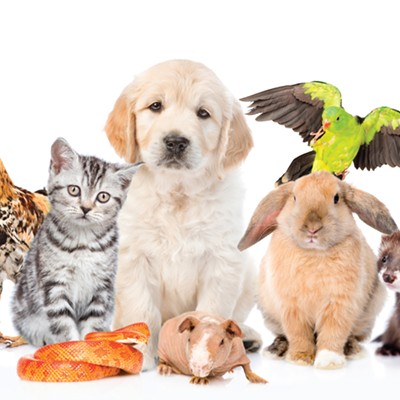If it takes a village to raise a child, how big a pack does it take to raise a guide dog for the blind?
Guide Dogs for the Blind is a nonprofit organization with headquarters in San Rafael, California and a 50-acre campus in Boring, Oregon, which opened in 1995. GDB is the largest guide dog school in North America and has been raising and training guide dogs since 1942. Its mission is to “…empower lives by creating exceptional partnerships between people, dogs and communities.”
“At Guide Dogs for the Blind, we believe that everyone deserves to move through the world safely and confidently—to live the life they want to live,” said Cheryl Vincent, Boring campus director of training.
So what does it take to become a guide dog for the blind?
When the puppies (yellow and black Labrador Retrievers, Golden Retrievers, or Lab/Golden crosses) are about 8-10 weeks old, the “Puppy Truck” picks them up from the San Rafael breeding facility for delivery to various locations across 10 Western states to meet their puppy raisers. Approximately 3,000 volunteers participate in the puppy-raising phase which also complements many 4-H, Future Farmers of America, or other programs.
“Our primary job as puppy raisers is to teach basic obedience and give the puppies a solid foundation of socializing, which looks different in every household,” said Megan Minkiewicz, volunteer puppy raiser in Powell Butte. Puppies are raised individually in families with or without kids, by working or retired adults, in neighborhoods or rural areas, or split between two families. ”It’s a great way to meet everybody’s schedule and to give the dogs a lot of varied exposure,” said Minkiewicz, who is raising her 17th puppy, Brian.
In addition to the puppy raisers, local puppy clubs help train and support the raisers. Minkiewicz estimated that there are 10 to 15 people in Central Oregon who volunteer in one capacity or another for GDB, including puppy sitters.
When the puppies are 14-16 months old, they’re recalled to one of the two campuses to start their formal guide dog training. “We try to make it as comfortable a transition from the puppy raiser’s home to our kennel,” said Vincent. “The dogs will be assigned to an instructor and each instructor has about four dogs each.”
The instructors start with basic obedience training on campus and teach the dogs the fundamentals of guide work, such as pulling into a harness, avoiding obstacles, walking in a straight line across an intersection and stopping at curbs. The dogs already have a foundation of being in stores and restaurants from their puppy trainers.
About one-quarter of the way through their three-month training comes the Preliminary Test. “An instructor will wear a blindfold or sleep mask and a supervisor or another instructor will walk behind them and make sure the dog has enough of the basic fundamentals down so they can advance to the more complex training,” said Vincent.
As the dogs near completion of their training, GDB reaches out to applicants to match them with a dog. Clients are brought to the campus for a two-week training period with their assigned dog. The students stay on campus in dormitories and the GDB staff take care of their daily needs. Upon completion of their training, there is a graduation ceremony which has reopened, post-COVID, to the public.
Bendite Nancy Stevens, blind since birth, has a 3½-year-old guide dog, Winnipeg. “Winnie” is Stevens’ second GDB dog. “For me, my favorite thing about having a dog is being able to hike independently and not hold on to somebody,” said Stevens, who is also an active tandem biker and Nordic skier. Stevens made the U.S. National Cross Country Ski Team and participated in the 1998 Paralympics in Nagano, Japan.
“I do love to travel,” said Stevens. “Using my GPS and her, I can pretty much get around and feel more at ease when I’m walking with Winnipeg. I walk really fast and she is also a fast walker, too. I love that freedom of flying down the sidewalk.”
GDB breeds about 800 puppies a year. Roughly half will advance to guide dog status and the others might go through career changes and be placed with a service dog group or into a different GDB program.
The organization relies solely on private donors as it doesn’t receive any government funding. GDB provides its services for free to their clients and cover the vast majority of costs associated with raising and training the puppies, veterinary care and travel and housing for their clients at their campuses. Puppy raisers and clients pay for dog food or receive support from their puppy club. Thousands of volunteers donate their time to assist staff with all aspects of the program, which has the simple goal of enriching a visually impaired person’s life through the eyes of a dog.
It truly takes a huge pack to raise a guide dog.

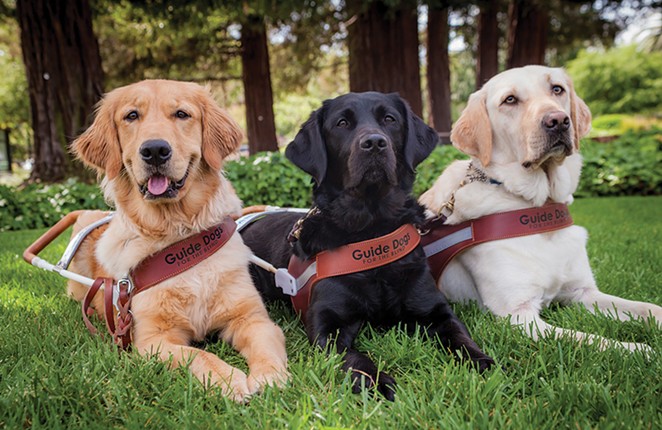
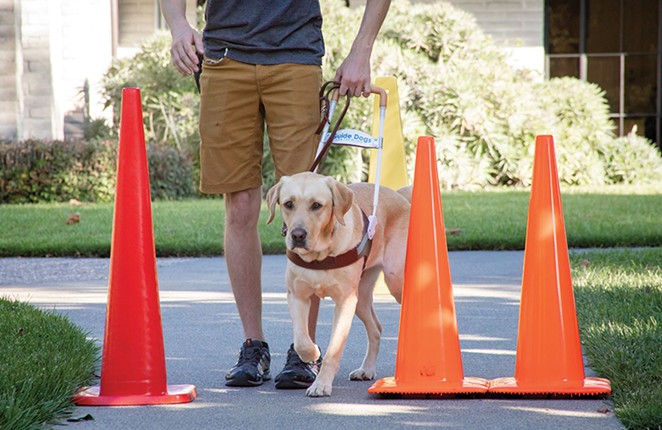
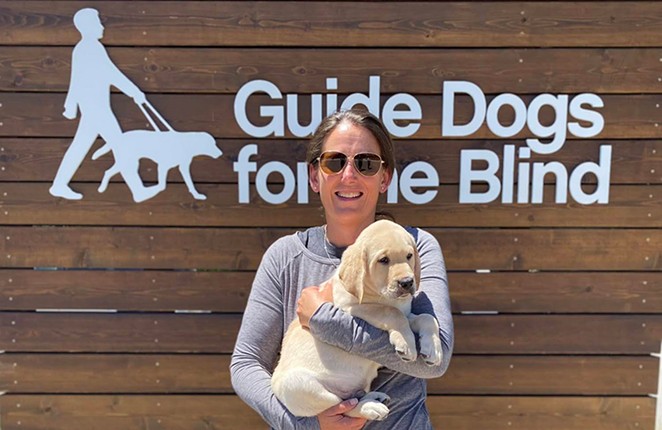


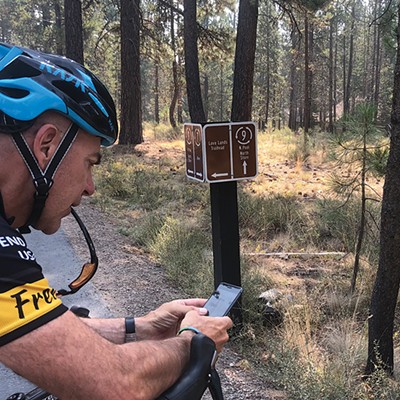



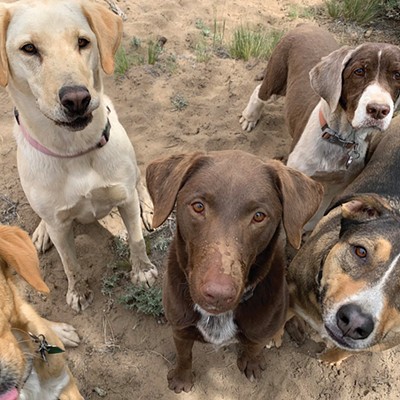
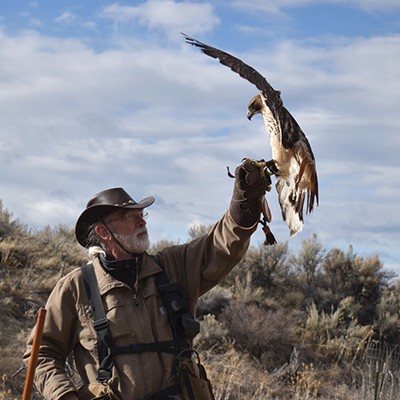
![Off-Leash Agility at Bend's Newest Park ▶ [With Video]](https://media1.bendsource.com/bend/imager/off-leash-agility-at-bends-newest-park/u/r-bigsquare/18689442/alpenglow-1.jpg?cb=1680198574)
